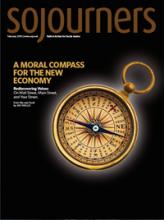In 1965, Nicole d’Entremont, a not-quite college graduate, was one of the young volunteers working at the New York Catholic Worker—St. Joseph’s House—on Chrystie Street, a short walk from the Bowery in lower Manhattan. These days the area is fashionable and the rent high, but in 1965, a two-room, cold-water flat could be rented, along with its cockroaches, for as little as $25 a month. For New Yorkers at the time, the Bowery conjured up images of homeless, alcoholic men panhandling in the day and sleeping in doorways at night. When an ambulance was summoned to aid one of the unwashed men who had collapsed on the street, it could easily take half an hour before it arrived. Dying men in that neighborhood were not a priority.
Read the Full Article

Already a subscriber? Login